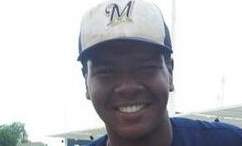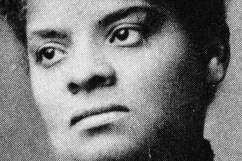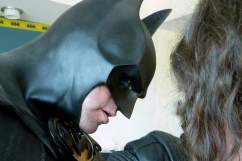
Google is celebrating Duke Kahanamoku’s 125th birthday with a Google Doodle. (Google/Matt Cruickshank)
Legendary Hawaiian surfer and Olympic-medal-winning swimmer Duke Kahanamoku, who would have turned 125 on August 24, 2015, is being honored with a Google Doodle.
He is often credited with helping to popularize the sport of surfing, but he also was a five-time Olympic medalist in swimming, served in the military, was the longtime sheriff of Honolulu and served as the “Ambassador of Aloha” after Hawaii became a state.
Kahanamoku died in 1968 of a heart attack at the age of 77.
Doodler Matt Cruickshank‘s artwork features the iconic surfer and his trademark smile, along with his 16-foot wooden surfboard.
Here’s what you need to know about Kahanamoku:
1. He Was Known as the ‘King of All Swimmers’ & Shattered World Records in His 20s
Duke Kahanamoku was born August 24, 1890, in Honolulu, Hawaii, and grew up on Waikiki. His father was a policeman, according to a New York Times biography.
He was the first of nine children of Duke Halapu and Julia Paoa Kahanamoku, according to DukeKahanamoku.com, a website set up to honor his legacy. He was named after his father, who was named by Princess Bernice Pauahi Bishop in honor of the arrival of England’s Duke of Edinburgh to Hawaii in 1869. His family called him by his middle name, Paoa.

An early sketch of today’s Google Doodle. (Google/Matt Cruickshank)
Kahanamoku was a strong swimmer from an early age, and in 1911 he broke three freestyle world records in Hawaii’s first-ever AAU swim meet, which was also the first time he swam competitively.
He then became an Olympic swimmer, qualifying for the U.S. team in 1912. At the Summer Olympics that year in Stockholm, he won the gold medal in the 100-meter freestyle and the silver medal in the 4×200-meter freestyle relay. He broke the world record in the 100-meter freestyle, using the famous “Kahanamoku Kick,” the Encyclopedia of Surfing says.
He won gold medals in the 100-meter freestyle and the relay at the 1920 Summer Olympics, and won the silver medal in the 100-meter freestyle at the 1924 Olympics when he was 34.
2. He Pulled 8 Fishermen From the Water in 1925 in a ‘Superhuman Rescue Act’
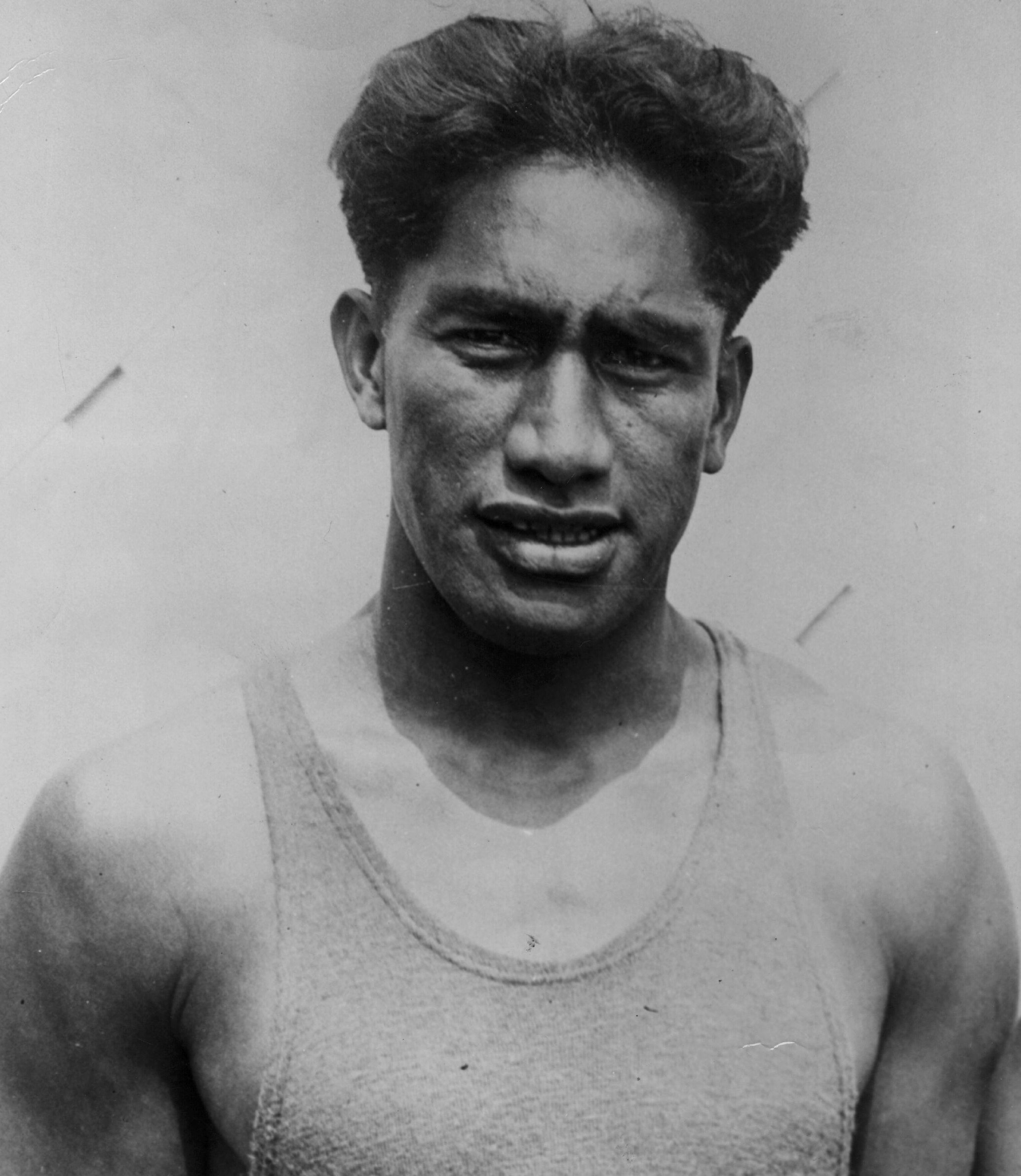
Duke Kahanamoku in 1920. (Getty)
Duke Kahanamoku also gained fame for an amazing rescue of stranded fishermen off the coast of Newport Beach, California, in 1925. According to the Encyclopedia of Surfing, the Honolulu Star-Bulletin called it a “superhuman rescue act.”
On June 14, 1925, a 40-foot shipping boat was wrecked by dangerous waters, sending fishermen into the sea, according to an article about the rescue on the surfing website The Inertia.
Kahanamoku, then 34, was at the beach surfing when the wreck occurred. He and two other surfers helped rescue 12 fisherman, though 17 lost their lives, according to the Inertia article. He was responsible for eight of the saves, pulling the fishermen onto his board.
“In a matter of minutes we were making rescues; (people were) screaming, gagging, thrashing. Some victims we could not save at all,” Kahanamoku recalled in the book Legendary Surfers by Malcom Gault Williams. “We lost count of the number of trips we made. Without the boards, we would probably not have been able to rescue a single person.”
The “Great Rescue” led to surfboards becoming a common tool for rescue swimmers.
3. He Used His Fame as a Swimmer to Bring Surfing to the U.S. Mainland
Duke Kahanamoku helped make surfing popular on the mainland United States, using his fame as a swimmer to draw crowds to events in California and on the Atlantic Coast.
According to the Encyclopedia of Surfing, he first held exhibitions in Atlantic City, New Jersey, in 1912, after returning from the Olympics as a gold medalist. He then brought the Hawaiian form of surfing to Australia and New Zealand in 1914 and 1915, and helped popularize surfing along the Southern California coast from 1915 to the 1930s.
4. He Served as an Ambassador for Hawaii & Helped Push for Statehood

Duke Kahanamoku with Charlotte Boyle and Ethelda Bleibtrey, practicing on a beach in Waikiki for the 100 yards National Championships. (Getty)
Duke Kahanamoku helped push for Hawaii to become a state. He served as the mostly ceremonial sheriff of Honolulu, and welcomed politicians and other dignitaries to the islands, while also bringing Hawaiian culture to the mainland.
After Hawaii became a state, the position of sheriff, which he had held for several years, was eliminated. He was given the paid title of “Ambassador of Aloha.”
Kahanamoku wrote on the back of his business card, “In Hawaii we greet friends, loved ones or strangers with ‘Aloha,’ which means with love. Aloha is the key word to the universal spirit of real hospitality, which makes Hawaii renowned as the world’s center for understanding and fellowship. Try meeting or leaving people with Aloha. You’ll be surprised by their reaction. I believe it, and it is my creed. Aloha to you.”
Kahanamoku was also an actor, appearing in at least 14 films, according to IMDB. Because of his Hawaiian heritage and dark skin, many of his film roles were as foreigners or Native Americans, like “Native Chief” in the 1955 film Mister Roberts, and The Devil-Ape in 1927’s Isle of Sunken Gold.
According to the New York Times, Kahanamoku also dealt with racism during his life because of skin color, including a time when he was refused service at a restaurant in Lake Arrowhead, California, that told him, “We don’t serve Negroes.”
5. He Was Honored With a Bronze Statue in Waikiki
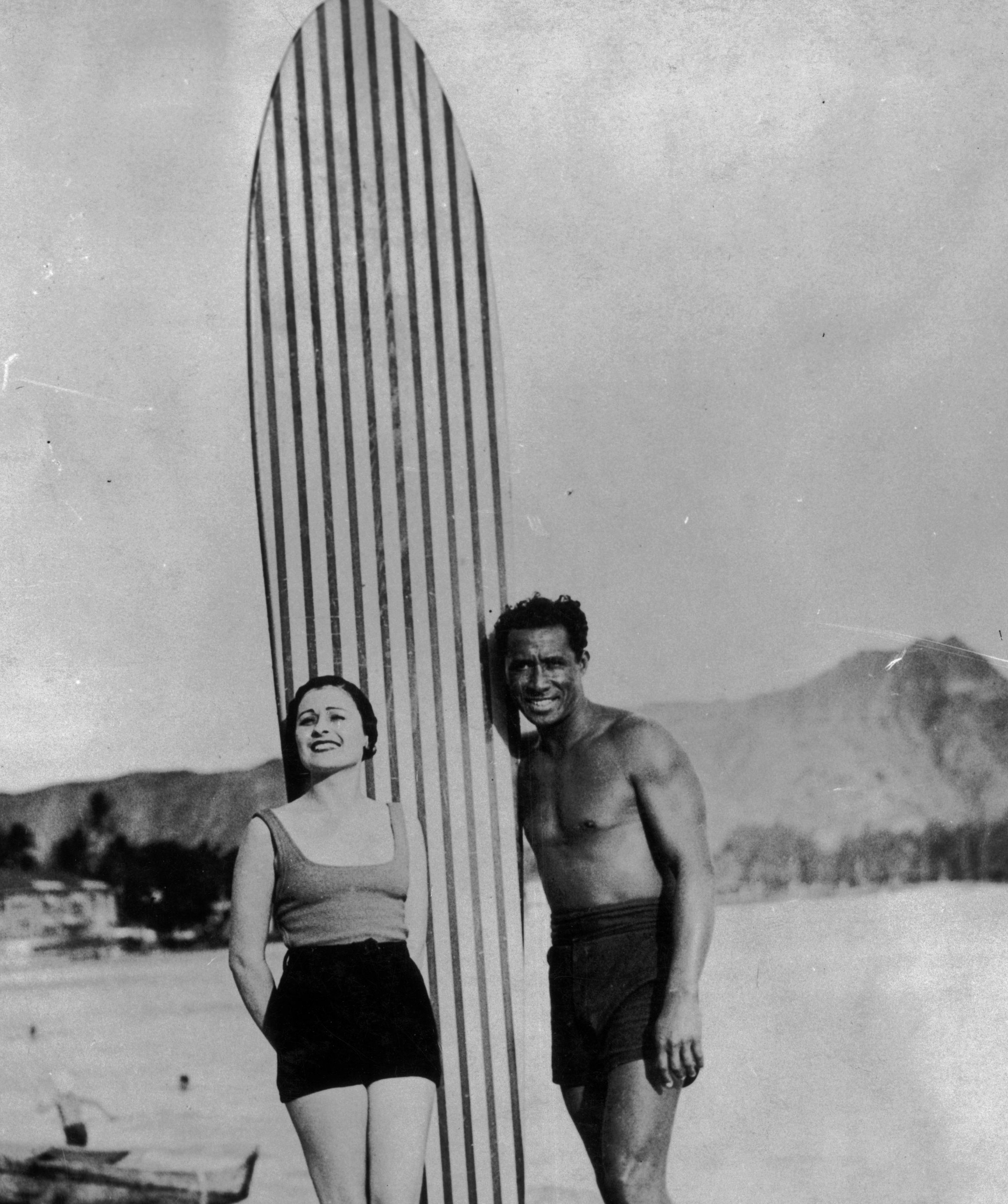
Duke Kahanamoku with an unidentified woman in the 1930s. (Getty)
Duke Kahanamoku, who was married to Nadine Alexander in 1940 but did not have any children, has been honored with a bronze statue in Waikiki. He is also in several surfing, swimming and Olympics halls of fame.
Many surfing awards and honors bear his name. The Duke Foundation provides grants and scholarships for Hawaiian athletes.


